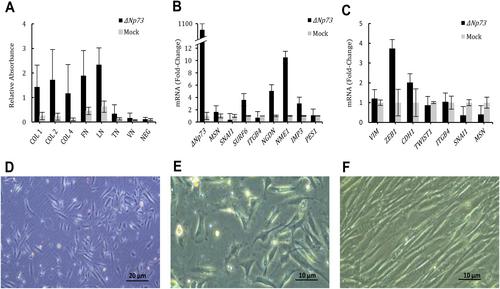Daniel Pastor-Morate, Lidia Amigo-Morán, María Garranzo-Asensio, Raquel Rejas-González, Patricia Carnicero, Nuria Rodríguez, Juan Pedro Pérez-Robledo, Rodrigo Barderas, Isabel Prieto-Nieto, Gemma Domínguez
下载PDF
{"title":"ΔNp73及其效应靶标促进结直肠腹膜癌并预测生存率","authors":"Daniel Pastor-Morate, Lidia Amigo-Morán, María Garranzo-Asensio, Raquel Rejas-González, Patricia Carnicero, Nuria Rodríguez, Juan Pedro Pérez-Robledo, Rodrigo Barderas, Isabel Prieto-Nieto, Gemma Domínguez","doi":"10.1002/path.6286","DOIUrl":null,"url":null,"abstract":"<p>Peritoneal metastasis of colorectal origin appears in ~10–15% of patients at the time of diagnosis and in 30–40% of cases with disease progression. Locoregional spread through the peritoneum is considered stage IVc and is associated with a poor prognosis. The development of a regional therapeutic strategy based on cytoreductive surgery, and hyperthermic intra-abdominal chemotherapy has significantly altered the course of the disease. Although recent evidence supports the benefits of cytoreductive surgery, the benefits of hyperthermic intra-abdominal chemotherapy are, however, still a matter of debate. Understanding the molecular alterations underlying the disease is crucial for developing new therapeutic strategies. Here, we evaluated the involvement in peritoneal dissemination of the oncogenic isoform of <i>TP73</i>, <i>ΔNp73</i>, and its effector targets in <i>in vitro</i> and mouse models, and in 30 patients diagnosed with colorectal peritoneal metastasis. In an orthotopic mouse model, we observed that tumor cells overexpressing <i>ΔNp73</i> present a higher avidity for the peritoneum and that extracellular vesicles secreted by <i>ΔNp73</i>-upregulating tumor cells enhance their dissemination. In addition, we identified that tumor cells overexpressing <i>ΔNp73</i> present with dysregulation of genes associated with an epithelial/mesothelial-to-mesenchymal transition (MMT) and that mesothelial cells exposed to the conditioned medium of tumor cells with upregulated <i>ΔNp73</i> present a mesenchymal phenotype. Lastly, <i>ΔNp73</i> and its effector target RNAs were dysregulated in our patient series, there were positive correlations between <i>ΔNp73</i> and its effector targets, and <i>MSN</i> and <i>ITGB4</i> (<i>ΔNp73</i> effectors) predicted patient survival. In conclusion, <i>ΔNp73</i> and its effector targets are involved in the peritoneal dissemination of colorectal cancer and predict patient survival. The promotion of the EMT/MMT and modulation of the adhesion capacity in colorectal cancer cells might be the mechanisms triggered by <i>ΔNp73</i>. Remarkably, ΔNp73 protein is a druggable protein and should be the focus of future studies. © 2024 The Authors. <i>The Journal of Pathology</i> published by John Wiley & Sons Ltd on behalf of The Pathological Society of Great Britain and Ireland.</p>","PeriodicalId":232,"journal":{"name":"The Journal of Pathology","volume":"263 3","pages":"328-337"},"PeriodicalIF":5.6000,"publicationDate":"2024-04-17","publicationTypes":"Journal Article","fieldsOfStudy":null,"isOpenAccess":false,"openAccessPdf":"https://onlinelibrary.wiley.com/doi/epdf/10.1002/path.6286","citationCount":"0","resultStr":"{\"title\":\"ΔNp73 and its effector targets promote colorectal peritoneal carcinosis and predict survival\",\"authors\":\"Daniel Pastor-Morate, Lidia Amigo-Morán, María Garranzo-Asensio, Raquel Rejas-González, Patricia Carnicero, Nuria Rodríguez, Juan Pedro Pérez-Robledo, Rodrigo Barderas, Isabel Prieto-Nieto, Gemma Domínguez\",\"doi\":\"10.1002/path.6286\",\"DOIUrl\":null,\"url\":null,\"abstract\":\"<p>Peritoneal metastasis of colorectal origin appears in ~10–15% of patients at the time of diagnosis and in 30–40% of cases with disease progression. Locoregional spread through the peritoneum is considered stage IVc and is associated with a poor prognosis. The development of a regional therapeutic strategy based on cytoreductive surgery, and hyperthermic intra-abdominal chemotherapy has significantly altered the course of the disease. Although recent evidence supports the benefits of cytoreductive surgery, the benefits of hyperthermic intra-abdominal chemotherapy are, however, still a matter of debate. Understanding the molecular alterations underlying the disease is crucial for developing new therapeutic strategies. Here, we evaluated the involvement in peritoneal dissemination of the oncogenic isoform of <i>TP73</i>, <i>ΔNp73</i>, and its effector targets in <i>in vitro</i> and mouse models, and in 30 patients diagnosed with colorectal peritoneal metastasis. In an orthotopic mouse model, we observed that tumor cells overexpressing <i>ΔNp73</i> present a higher avidity for the peritoneum and that extracellular vesicles secreted by <i>ΔNp73</i>-upregulating tumor cells enhance their dissemination. In addition, we identified that tumor cells overexpressing <i>ΔNp73</i> present with dysregulation of genes associated with an epithelial/mesothelial-to-mesenchymal transition (MMT) and that mesothelial cells exposed to the conditioned medium of tumor cells with upregulated <i>ΔNp73</i> present a mesenchymal phenotype. Lastly, <i>ΔNp73</i> and its effector target RNAs were dysregulated in our patient series, there were positive correlations between <i>ΔNp73</i> and its effector targets, and <i>MSN</i> and <i>ITGB4</i> (<i>ΔNp73</i> effectors) predicted patient survival. In conclusion, <i>ΔNp73</i> and its effector targets are involved in the peritoneal dissemination of colorectal cancer and predict patient survival. The promotion of the EMT/MMT and modulation of the adhesion capacity in colorectal cancer cells might be the mechanisms triggered by <i>ΔNp73</i>. Remarkably, ΔNp73 protein is a druggable protein and should be the focus of future studies. © 2024 The Authors. <i>The Journal of Pathology</i> published by John Wiley & Sons Ltd on behalf of The Pathological Society of Great Britain and Ireland.</p>\",\"PeriodicalId\":232,\"journal\":{\"name\":\"The Journal of Pathology\",\"volume\":\"263 3\",\"pages\":\"328-337\"},\"PeriodicalIF\":5.6000,\"publicationDate\":\"2024-04-17\",\"publicationTypes\":\"Journal Article\",\"fieldsOfStudy\":null,\"isOpenAccess\":false,\"openAccessPdf\":\"https://onlinelibrary.wiley.com/doi/epdf/10.1002/path.6286\",\"citationCount\":\"0\",\"resultStr\":null,\"platform\":\"Semanticscholar\",\"paperid\":null,\"PeriodicalName\":\"The Journal of Pathology\",\"FirstCategoryId\":\"3\",\"ListUrlMain\":\"https://onlinelibrary.wiley.com/doi/10.1002/path.6286\",\"RegionNum\":2,\"RegionCategory\":\"医学\",\"ArticlePicture\":[],\"TitleCN\":null,\"AbstractTextCN\":null,\"PMCID\":null,\"EPubDate\":\"\",\"PubModel\":\"\",\"JCR\":\"Q1\",\"JCRName\":\"ONCOLOGY\",\"Score\":null,\"Total\":0}","platform":"Semanticscholar","paperid":null,"PeriodicalName":"The Journal of Pathology","FirstCategoryId":"3","ListUrlMain":"https://onlinelibrary.wiley.com/doi/10.1002/path.6286","RegionNum":2,"RegionCategory":"医学","ArticlePicture":[],"TitleCN":null,"AbstractTextCN":null,"PMCID":null,"EPubDate":"","PubModel":"","JCR":"Q1","JCRName":"ONCOLOGY","Score":null,"Total":0}
引用次数: 0
引用
批量引用


 求助内容:
求助内容: 应助结果提醒方式:
应助结果提醒方式:


